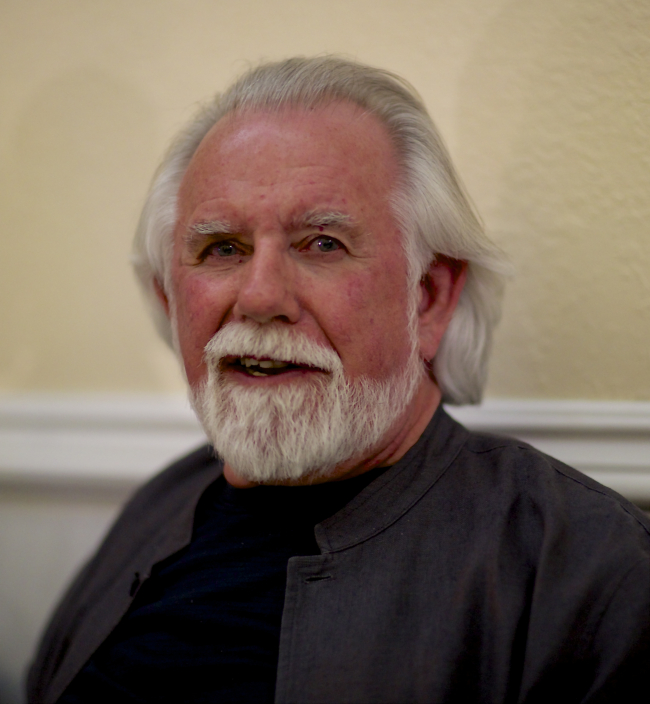Man behind revolution of motion picture industry
Alvy Ray Smith, cofounder of Pixar, talks about Moore’s Law, driving force of his innovations in computer graphics
By 이우영Published : Oct. 15, 2015 - 18:19
From “Toy Story,” the first completely computer-animated feature film released in 1995, to this summer’s hit “Inside Out,” Pixar movies have captured the hearts of children and adults around the world.
The man who made the computer-generated imagery possible is Alvy Ray Smith, cofounder of Pixar Animation Studios and a pioneer of computer graphics. Since founding Pixar in 1986 with Ed Catmull, he has been at the forefront of leading innovations in computer graphics and its applications to various media. He shifted the course of the motion picture industry by enabling the production of movies entirely made by computer graphics.
The man who made the computer-generated imagery possible is Alvy Ray Smith, cofounder of Pixar Animation Studios and a pioneer of computer graphics. Since founding Pixar in 1986 with Ed Catmull, he has been at the forefront of leading innovations in computer graphics and its applications to various media. He shifted the course of the motion picture industry by enabling the production of movies entirely made by computer graphics.

Having retired in 1999, Smith has since spent his time giving lectures and writing books. In November, he will come to Seoul to meet the Korean audience at Herald Design Forum 2015. Before he makes an official visit, Smith talked about his early days of venturing into computer graphics and how he sees its future, driven by Moore’s Law, which he frequently referred to an email interview.
Following is an excerpt of the interview.
The Korea Herald: How did Pixar begin and what vision did you have?
Smith: The group now known as Pixar first assembled in 1975 on Long Island, near New York City, at a place called the New York Institute of Technology. We were not officially part of that school. There was an old-fashioned animation studio there, which taught us about feature-length film animation in the old celluloid-based system. We were there to discover how to use the computer to make animated movies. We formed the vision of being the first group in the world to make a movie completely with computers. We did know in some vague way that it was going to be possible, and that computers would eventually become fast enough to make it possible. In other words, Moore’s Law (computers get better by 10 times every five years) was the basis of our foresight.
KH: What was your driving force in making innovations in computer-generated animation?
Smith: The foundation of my career was both art and science. I was formally a trained scientist, and I particularly loved the new machine called a computer. I was also an artist, painting pictures with oil and acrylic paints on stretched canvas. The drive for me was to marry these two parts of myself. Lucky for me, Moore’s Law was ready to deliver sufficient computing power in my lifetime to make a full movie possible -- making pictures with computers.
KH: Pixar’s original stories and high-tech animation skills are largely attributable to the corporate culture which encourages employees to think freely and creatively. To what extent has this culture affected the company’s achievements?
Smith: Pixar’s corporate culture is its principal glory. Ed Catmull and I always understood that it was smart business to hire people smarter than ourselves (hard to do!). We also understood that money was not necessarily the principal reward to many people. Many want prestige and recognition for their accomplishments (as well as a good salary, of course).
Therefore we encouraged our scientifically oriented creators to publish papers on theoretical computer graphics to gain the esteem of their peers. We ran a collegiate culture, with as flat a hierarchy as possible.
Finally, and most importantly for our kind of company, we insisted on mutual admiration between those who are technically creative and those who are artistically creative. One type was not superior to the other type. The reward system was designed to encourage that mutual appreciation: equal salaries, equal benefits, equal advancement, but mostly equal praise and recognition. I believe that these principals are fundamental to Pixar’s success.
KH: What is the next goal in the computer graphics technology?
Smith: I believe that the next major achievement to accomplish with computer graphics is the first “camera-less movie.” That is a movie that is “live action” apparently, with humans -- even in intimate close-up scenes -- who are actually avatars of humans. I am also watching the arrival of virtual reality. It finally seems to be here after decades of promise. I am doing this by providing assistance to young businessmen whose work I am personally interested in.
KH: What have you been working on recently?
Smith: I am writing a book called “A Biography of the Pixel.” It is a layman’s guide to the modern digital world, especially the modern digital media world. I am driven by the observation that most people today do not know even the basics about how the modern world works. For instance, hardly anybody can accurately tell me what a pixel is. So I teach, without math, some of the fundamentals. I intertwine the intuitive teachings with wonderful stories about the people involved. There are several astonishing stories that are generally unknown. This project has taken five years so far, because of the research required, and will take probably another three years to complete.
By Lee Woo-young (wylee@heraldcorp.com)








![[Kim Seong-kon] Democracy and the future of South Korea](http://res.heraldm.com/phpwas/restmb_idxmake.php?idx=644&simg=/content/image/2024/04/16/20240416050802_0.jpg&u=)







![[KH Explains] Hyundai's full hybrid edge to pay off amid slow transition to pure EVs](http://res.heraldm.com/phpwas/restmb_idxmake.php?idx=652&simg=/content/image/2024/04/18/20240418050645_0.jpg&u=20240418181020)

![[Today’s K-pop] Zico drops snippet of collaboration with Jennie](http://res.heraldm.com/phpwas/restmb_idxmake.php?idx=642&simg=/content/image/2024/04/18/20240418050702_0.jpg&u=)